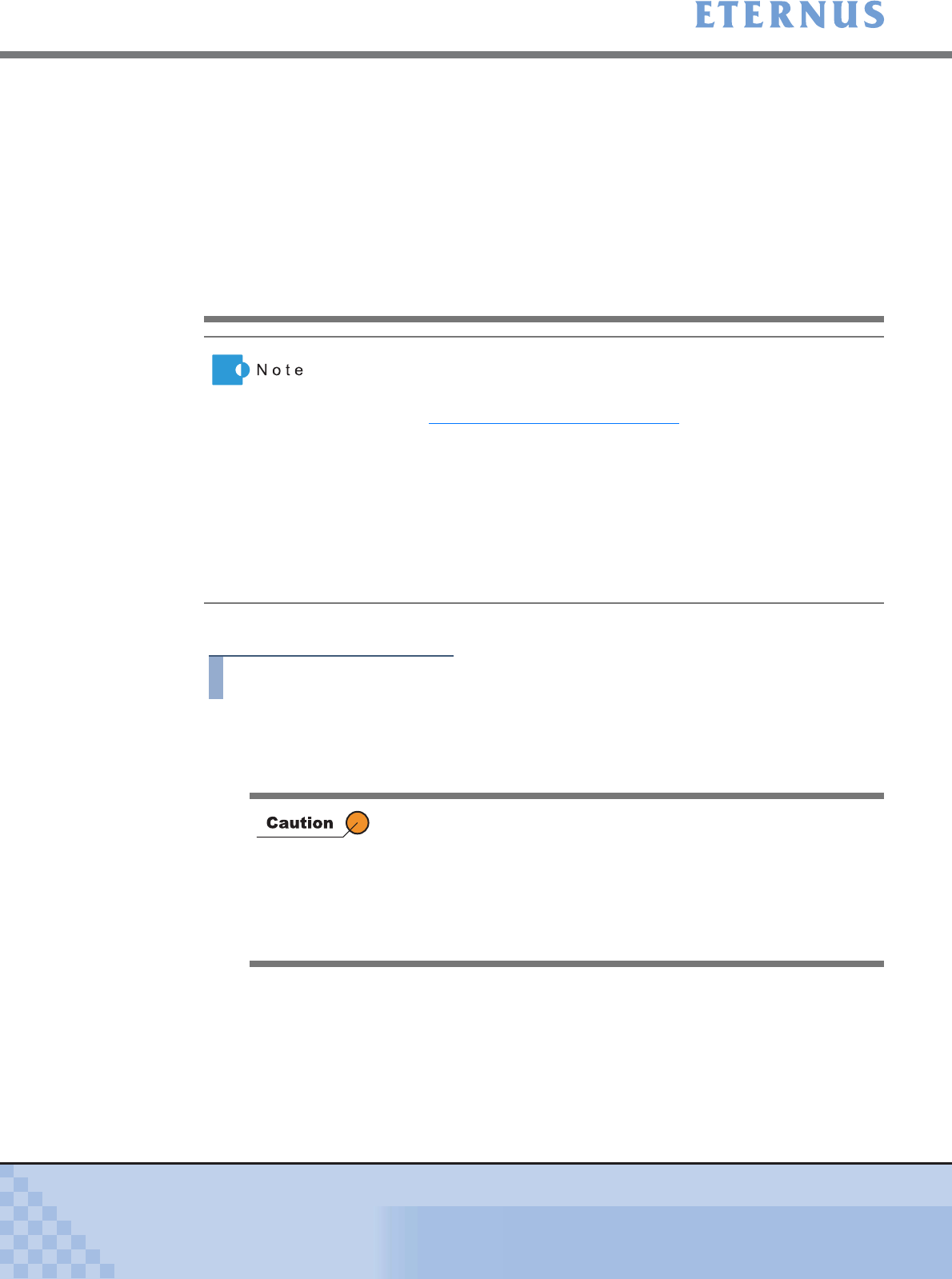
Chapter 5 Configuration Menu
> 5.2 RAID Management
ETERNUS DX400/DX8000 series ETERNUSmgr User Guide Settings/Maintenance
231
Copyright 2010 FUJITSU LIMITED
P2X0-0760-02ENZ0
This section explains the LUN Concatenation procedures.
Procedure
1 Click [LUN Concatenation] under the RAID Management in the [Configuration]
menu.
→ The [LUN Concatenation (Select Volume to Expand)] screen appears.
• When Resource Domains are registered in the ETERNUS DX400/
DX8000 series, the displayed volumes and the RAID Groups differ
depending on the current user account.
- When logged on using a Total Administrator account, all the volumes
and RAID Groups that are assigned to Resource Domains are
displayed.
- When logged on using a Resource Domain Administrator account,
only the volumes and RAID Groups that are assigned to the relevant
Resource Domain, and only the volumes and RAID Groups that are
assigned to the Shared Resource, are displayed.
• Apart from existing volume expansion using the [LUN Concatenation]
function, there is another way of expanding the capacity of a volume.
This is migrated volume expansion using the [RAID Migration] funct i o n .
Refer to "5.2.12 RAID Migration" (page 214)
details.
• Encryption status of the new concatenated volume follows that of the
existing volume.
• New concatenated volumes are automatically formatted. Progress of
formatting may be checked via the [Volume List] menu.
• When adding a new volume to the existing concatenated volume, where
the different disk type volumes are concatenated, only the volume
registered in the RAID Group with the same disk type as the volume to
be concatenated (the first volume) can be used.
In the following cases, the LUN Concatenation function cannot be
used.
• When there is an abnormal component in the Controller
Enclosure (CE) (CE Component Error).
• When there are no Logical Volumes that can be expanded.
• When the maximum number of Logical Volumes are already
registered.


















